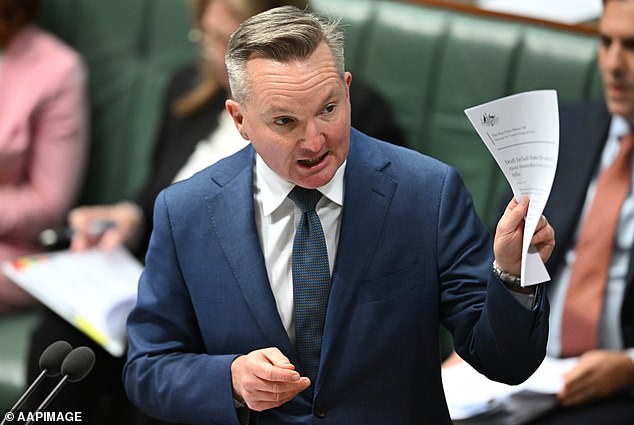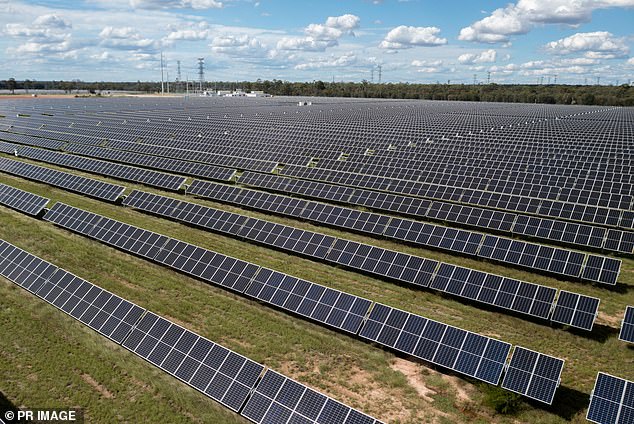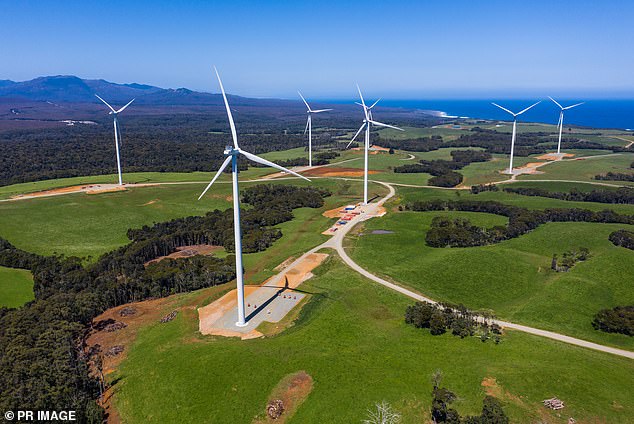Energy bills in Australia are set to rise, not fall, because the renewable transition timetable has been built on cost assumptions that simply aren’t realistic.
The regulator’s latest numbers tell us that for 2025–26, average Australian households are once again facing bill increases of up to 6 per cent, with NSW and Victoria copping the highest increases.
These numbers are baseline hikes, before retailers layer on their own price increases.
It all comes as the government scales back the pre-election energy bill relief it offered to help buy votes.
Even Labor’s own bureaucratic briefings for whoever won the May election flagged ‘a further significant increase in retail electricity prices’, admitting emission cuts would need to ‘accelerate rapidly’ to hit the 2030 target.
That means even higher energy price hikes to come.
The government fought hard to try and stop that advice ever going public, using FOI laws in an attempt to restrict what was released. Fortunately, they ultimately failed, and now we know the cost of living impacts of the crusade towards net zero.

Why is the Albanese government hammering Australian households and industries with the costs of cutting emissions when we keep exporting emissions, and our domestic emissions are so negligible on the global scale, writes PVO. Minister for Climate Change and Energy Chris Bowen is pictured above
The Australian Energy Market Operator’s (AEMO) 2024 Integrated System Plan puts the annualised capital bill at roughly $122billion through to 2050, and calls for about 10,000 kilometres of new transmission lines to connect far-flung wind and solar zones to demand centres.
The regulator’s own reliability outlook says that the lights stay on only if all this kit arrives on time.
Any delays would increase reliability risks – as has already happened – forcing suppliers to take emergency measures – which is essentially high-emitting alternatives to bridge the gaps.
When that can’t or doesn’t happen, the lights go out. It’s that simple.
These goals will require a Herculean effort, even if we try and fail.
Now set that domestic ambition against our global footprint when it comes to emissions to get a sense of how futile this crusade might really be when placed into a wider context.
Australia accounts for about 1.1 per cent of world carbon emissions, yet we export far more fossil energy than we use.
Roughly 88 per cent of our black coal output and around 70 per cent of our gas production leaves the country, exported to drive up overseas emissions we take zero responsibility for, to many countries with little interest in climate change action.

Renewable energy zealots claim wind and solar are ‘cheap forever’ so don’t sweat it during the transition period. But wind turbines are designed for a lifespan of roughly 20 years, utility-scale lithium batteries last about 15 years (and aren’t easily disposed of), and solar modules last 25-30 years. A solar farm in Queensland (above)
Our export emissions – which Labor never talks about – are second only to Russia.
Square that circle with the crusade towards net zero emissions domestically. The government has no interest in cutting emissions fuelling exports. Economically, thank god for that. But it’s undeniably inconsistent.
So why hammer Australian households and industries with the costs of cutting emissions when we keep exporting emissions, and our domestic emissions are so negligible on the global scale?
Apart from the cost impact of rising energy prices in Australia, the reliability risks are also rising. Ageing coal units are running harder and breaking more often than they used to.
AEMO’s Electricity Statement of Opportunities warns that without firming and transmission arriving on time, supply gaps will emerge across the coming decade. Again, Labor never wants to talk about that.
Gas is supposed to be the backstop, but even AEMO’s gas outlook has been juggling tight supply dynamics and shifting shortfall dates. Households experience this as price spikes at peak times and via blackouts.
Renewable energy zealots claim wind and solar are ‘cheap forever’ so don’t sweat it during the transition period. But wind turbines are designed for a lifespan of roughly 20 years, utility-scale lithium batteries last about 15 years (and aren’t easily disposed of), and solar modules last 25-30 years.
Add in the cost of replacing inverters and the sheer amount of new steel, copper and land needed for the transmission build-out, and you have a system with a persistent capex churn. It’s certainly not a case of ‘one and done’ as claimed.

The Albanese government needs to shift from grandstanding about 2035 targets that won’t be met without considerable pain, including the pain of trying and failing, and instead focus on practical adaptation pathways. A wind farm in Tasmania is pictured above
Australia continues to have a statutory ban on nuclear power, with the government not even willing to properly investigate its viability. Labor says nobody wants to invest in nuclear power here.
Funny that, when there is a statutory ban in place. You don’t have to look too hard abroad to see how viable it is as a way of cutting emissions and guaranteeing reliable power.
Whatever one’s view on nuclear, refusing to even test the economics or safety case for it is ideology masquerading as prudence.
A conservative risk management posture would do three things.
First, stop pretending that a rapid, transmission-heavy, renewables-only path is low cost in the near term. More transparency by government when it comes to costings would prove that, which presumably is why transparency is so lacking.
Second, align timelines with engineering realities. Keep reliable energy options despite their emissions until equivalent reliability exists in the new systems. Just betting on reliability courtesy of heroic delivery schedules is crazy.
Third, shift from grandstanding about 2035 targets that won’t be met without considerable pain, including the pain of trying and failing, and instead focus on practical adaptation pathways.
If you believe the science, climate change is happening.
And if you’re realistic, the zealots might want to stop it but they can’t. So being ready for its effects is at least as important as trying to prevent it from happening.
Australia can and should cut emissions.
But when we emit just 1.1 per cent of the world’s total, while exporting the fuels that drive a much larger slice of emissions offshore, it is a fraud to claim that domestic emissions cuts are the be-all and end-all.
It is economically reckless to pretend our domestic emissions targets will move the climate needle globally.
Net zero as a slogan has become a cover for not doing the hard yards on reliability, transparency and adaptation.
If the Albanese government really wants to sell higher energy bills as the price of its ‘leadership’ on climate change, it should start by levelling with people about the impact it’s having.
Downplaying it perpetuates a fraud.
